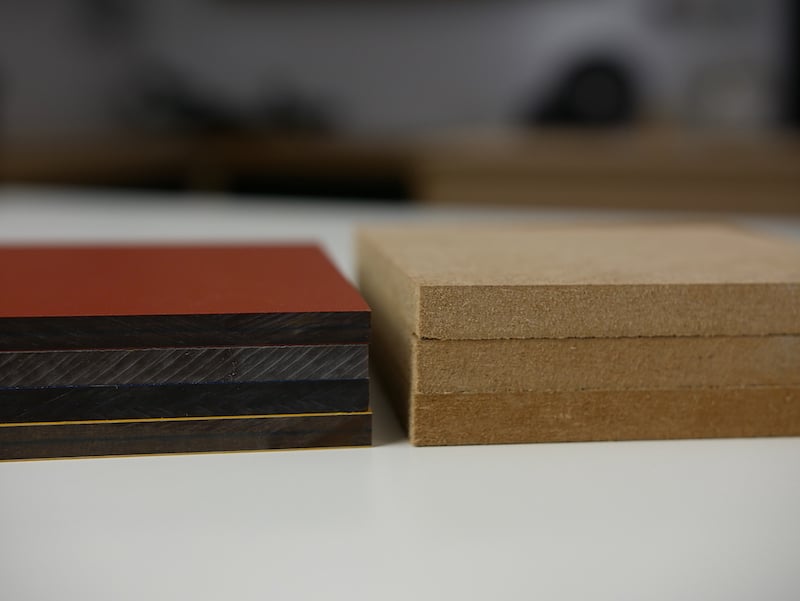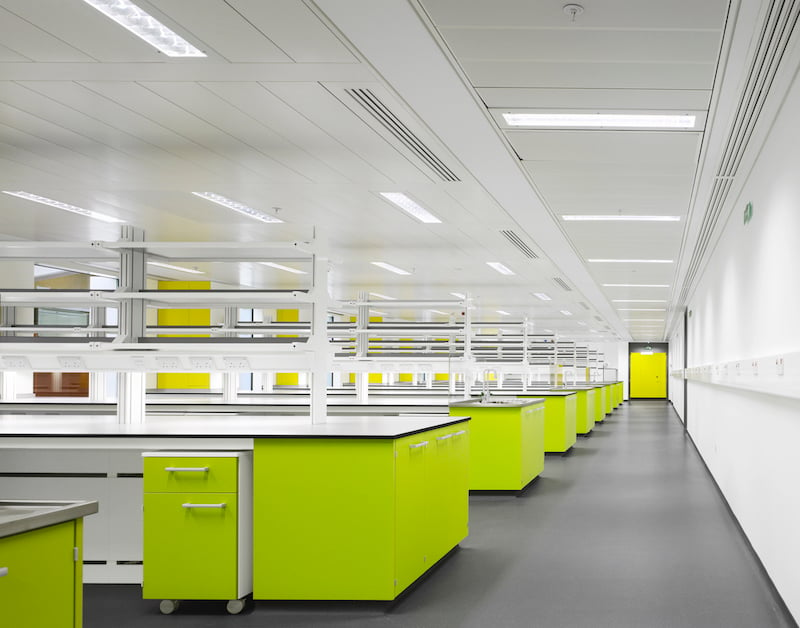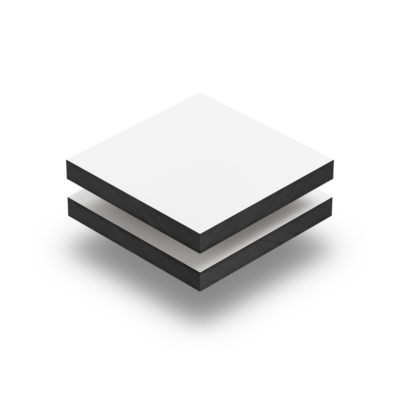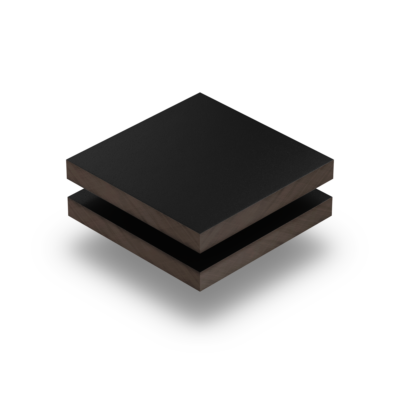HPL and MDF are both budget-friendly alternatives to real wood. Each product has its own characteristics but they have much in common, so it can be difficult to decide which is most suitable for the project you have in mind. To help you make up your mind, we’ve taken a closer look at the properties of HPL and MDF to help you make your decision.
MDF: versatile and flexible
MDF or medium density fibreboard is a sheet material that resembles traditional chipboard. The panels consist of a mixture of finely ground wood chips and resin, which is pressed into a sheet. MDF is lightweight but very strong and is much cheaper than solid wood. This material is suitable for many different applications, for example, doors, laminate boards and furniture.
The main advantages of MDF:
- Easy to process
- Splinter free
- Flexible: has a high breaking point
- Easier to glue than wood
- Very durable
- Stable under fluctuations in temperature
One disadvantage of MDF panels is that most versions are not water-resistant. The material can bend under a heavy load. If this occurs, it’s no longer possible to bend the panel back to its original shape. For this reason, MDF should not be used for making a cabinet, for example, as the panels will sag if there is too much weight on them. Lastly, MDF is less suitable for painting than timber because the paint is absorbed more quickly.
Variants of MDF
As well as the standard panel, which can be recognised by its light brown colour, several other types of MDF are available. These have been developed for specific applications, including water-resistant MDF sheets, fire-retardant sheets and MDF panels that have been specially developed for exterior applications.
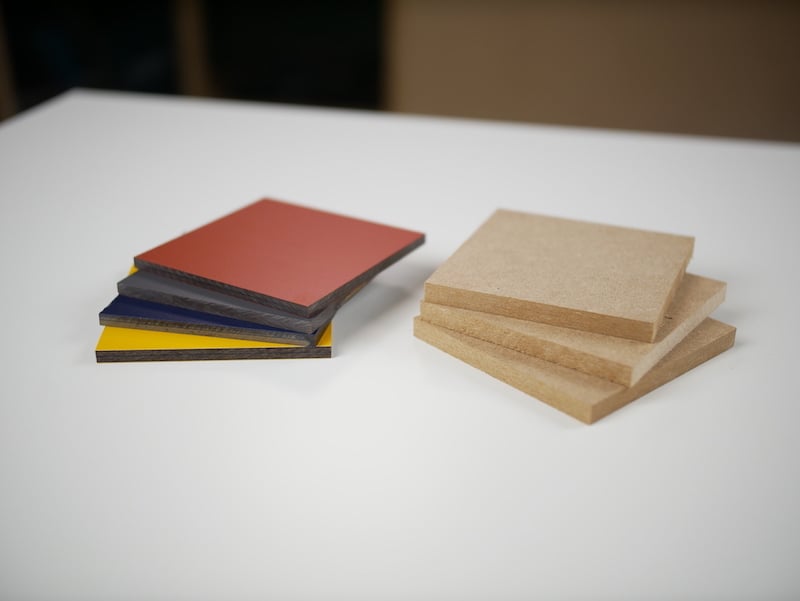
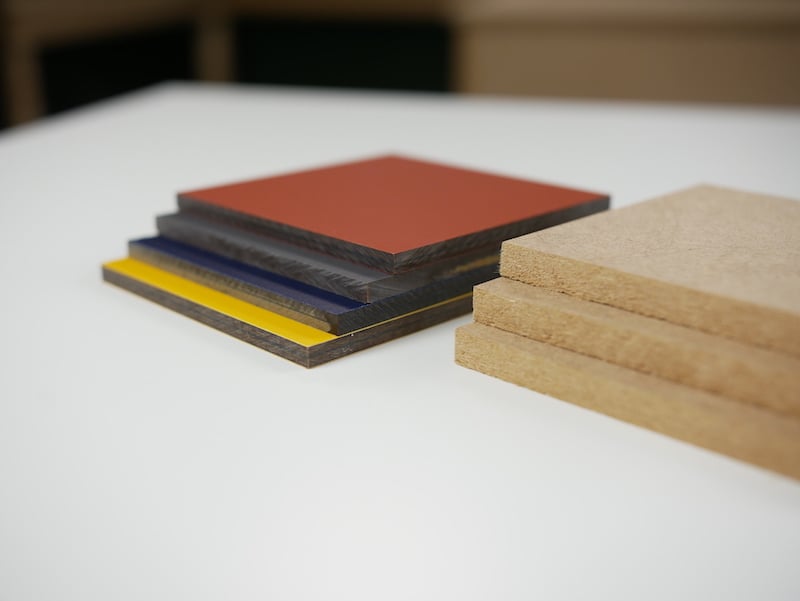
HPL: a very strong sandwich panel
HPL or high-pressure laminate panels consist of several layers of pressed wood fibres combined with resin. The layers are compressed at a high temperature and under high pressure to create a very strong and durable panel. Both sides of the panel are then finished with an extremely hard top layer. HPL is used commonly used for billboards and wall cladding. The advantages of this material include:
- Extremely strong
- Low maintenance
- Weather-resistant
- Long-lasting
- Rigid
- Available in a wide range of colours and finishes
One disadvantage of HPL is that the panels aren’t resistant to heat. And thanks to the strength and rigidity of the material, HPL is more difficult to machine than MDF.
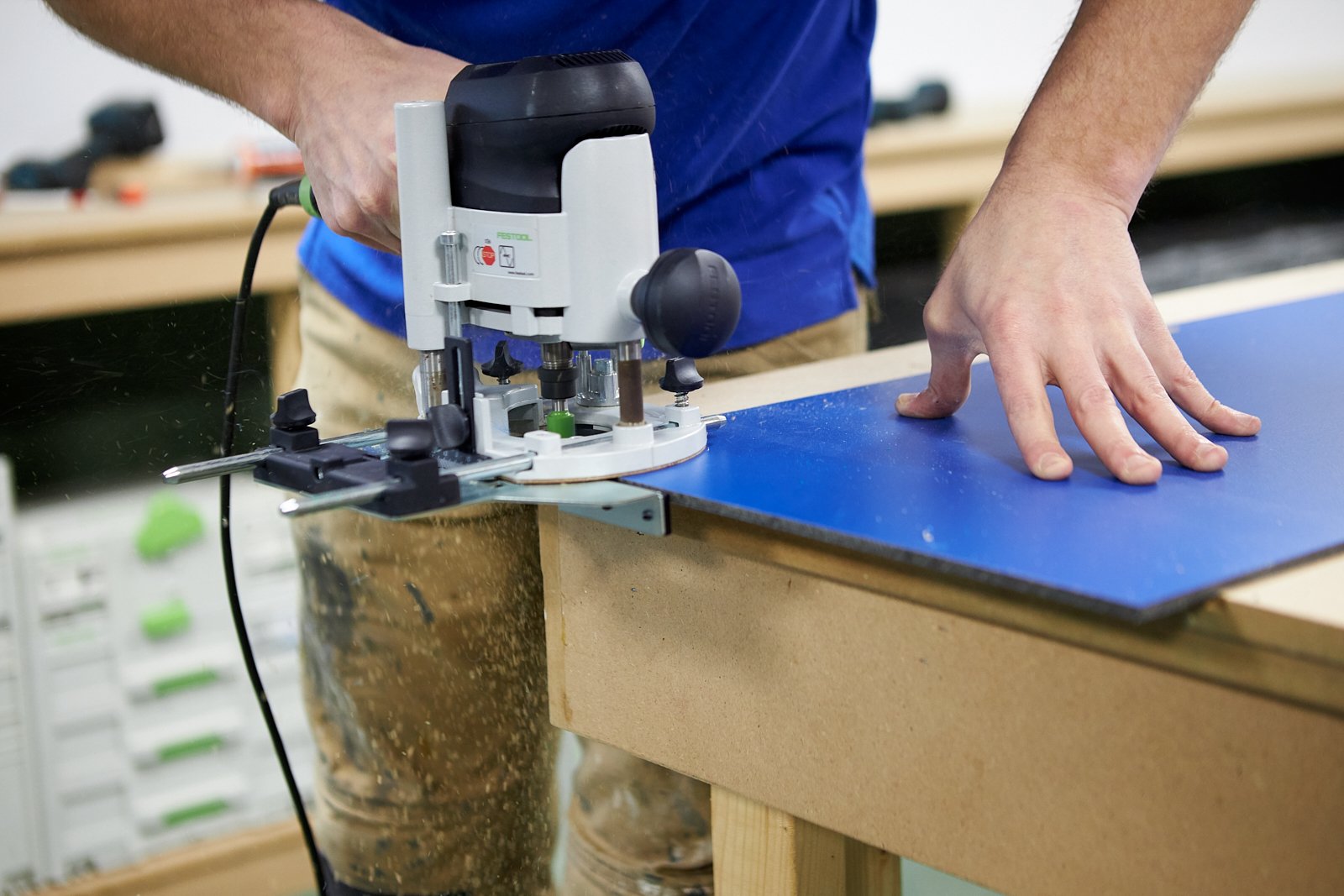
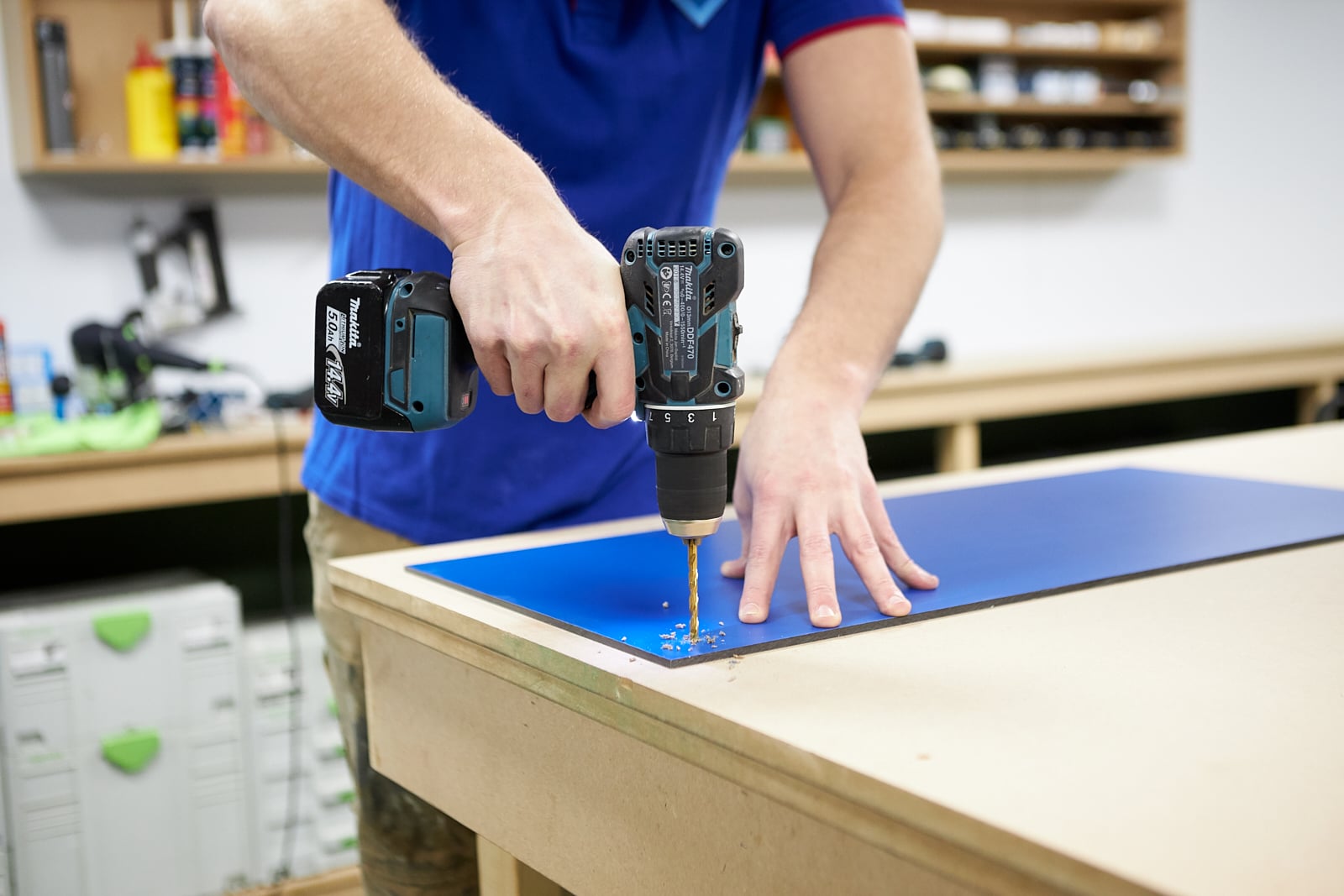
Variants of HPL
The most well-known manufacturer of HPL sheets, Trespa®, has developed a range of product lines specially designed for various applications. Trespa® Izeon® is a solid panel that is particularly well suited for façades. Trespa® Toplab® is used for environments where hygiene is important, such as labs and hospitals. We also supply Trespa®Meteon® sheets, which are most appropriate for exterior applications.
To sum up: HPL or MDF?
In the end, whether you opt for MDF or HPL will depend on what you intend using the panels for. The materials have many similarities but also some key differences. For example, thanks to its resistance to moisture and its ease of maintenance, HPL is extremely suitable for exterior applications and hygienic environments. MDF sheets are easier to work with than HPL and are therefore a very popular option for the home handyman. Because it is so user-friendly, MDF is frequently used in interiors and for making furniture.
Ordering HPL sheets cut to size
In our webshop, you will find all sorts of HPL sheets. View our coloured HPL sheets and white HPL sheets and choose the shade that complements your decor. We’ll cut all the panels to size for you free of charge and ensure that you receive your order as soon as possible.


